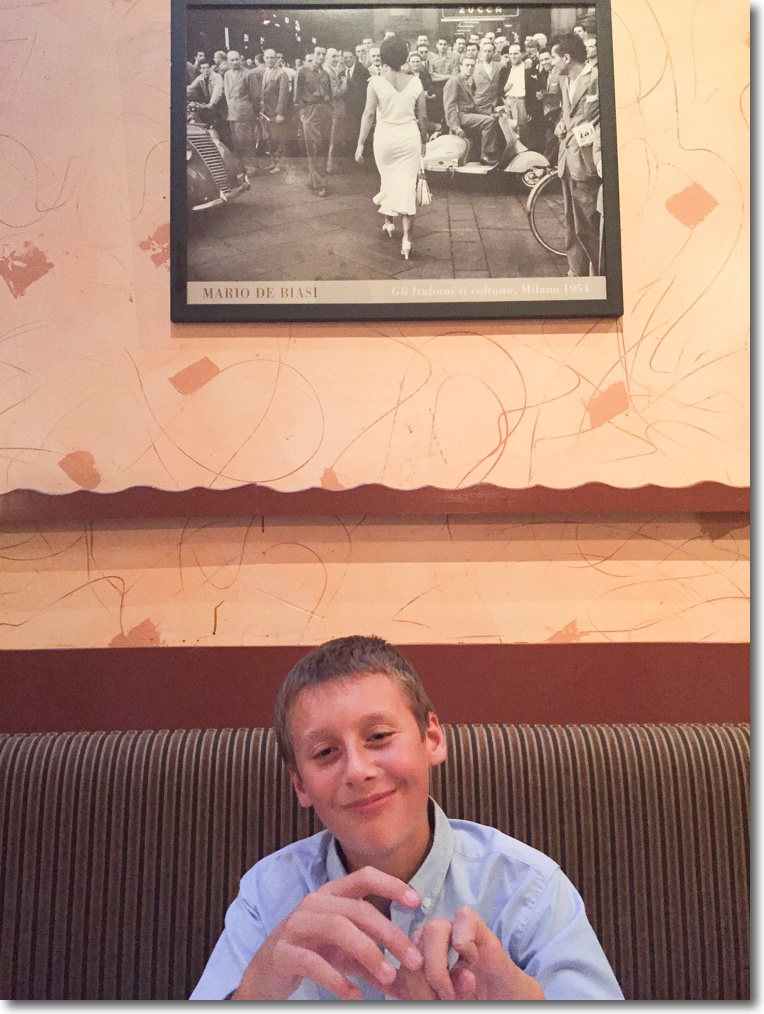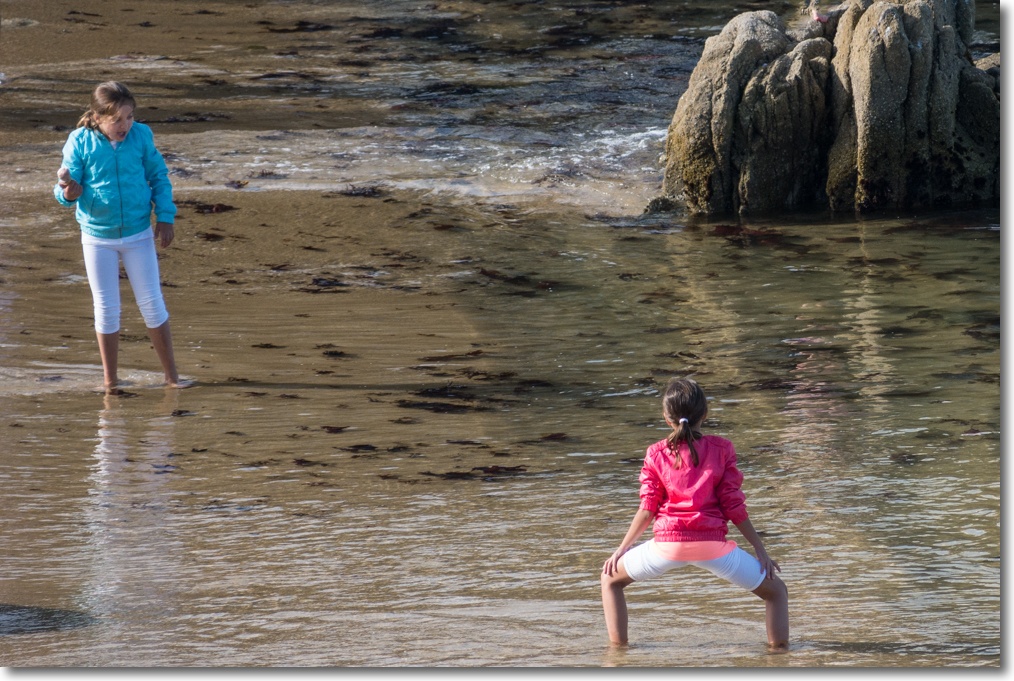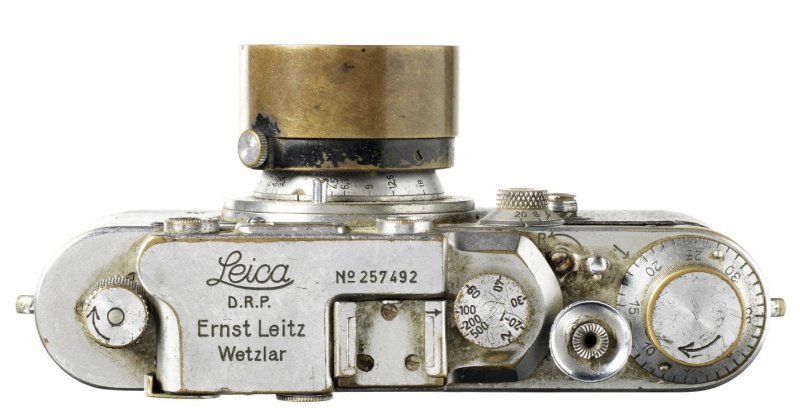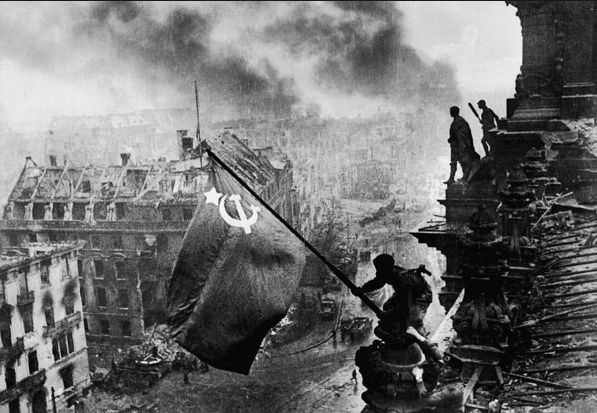Outstanding.
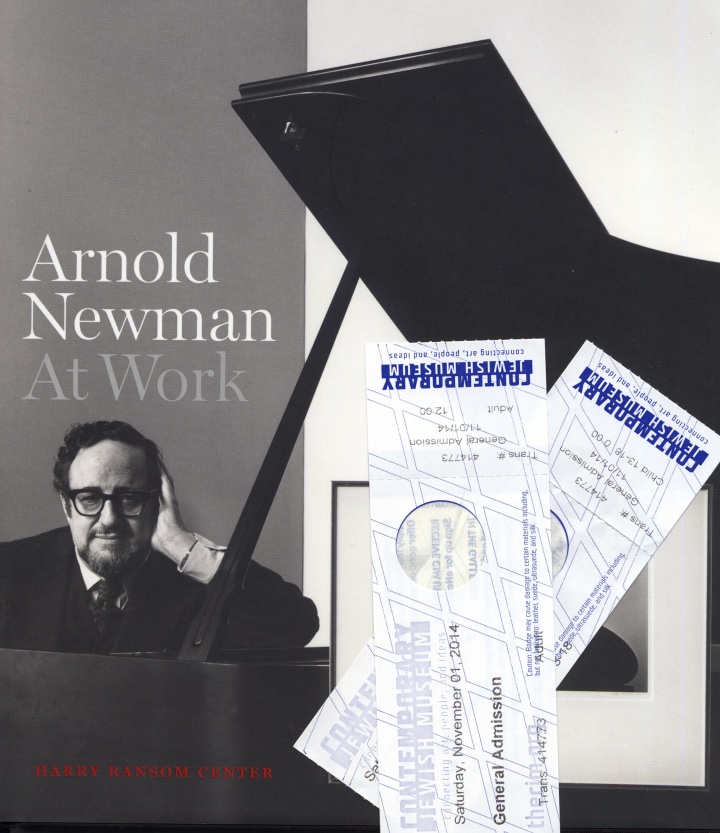
Click the image to go to Amazon US.
Arnold Newman is the father of the environmental portrait with a strong, severe vision which he applied to taking portraits of some of the most famous people in all areas of endeavor during his life (1918 – 2006). The show at the Contemporary Jewish Museum in San Francisco displaying much of his best work is highly recommended.
The related book, above, is worth getting, but most certainly not for the plodding writing which somehow manages to make even the two most thrilling encounters of Newman’s life – the portrait of the Nazi murderer Krupp and that of the no less despicable Arafat – boring. But there are many images, well reproduced, making the cost bearable.
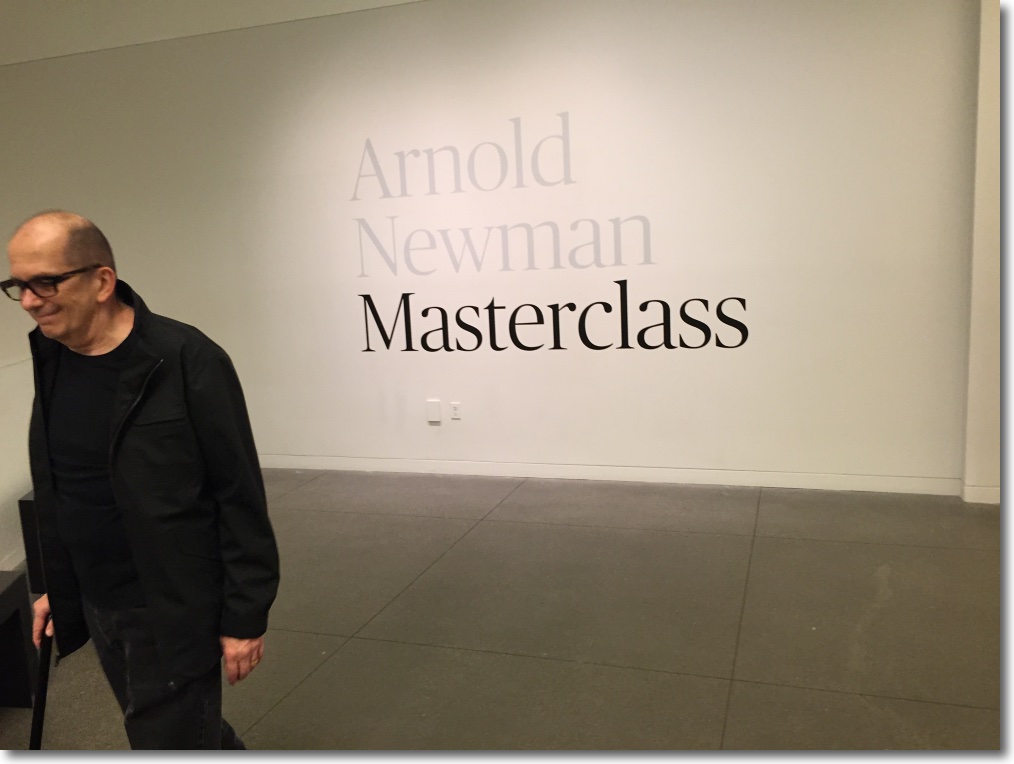
Entrance to the show.
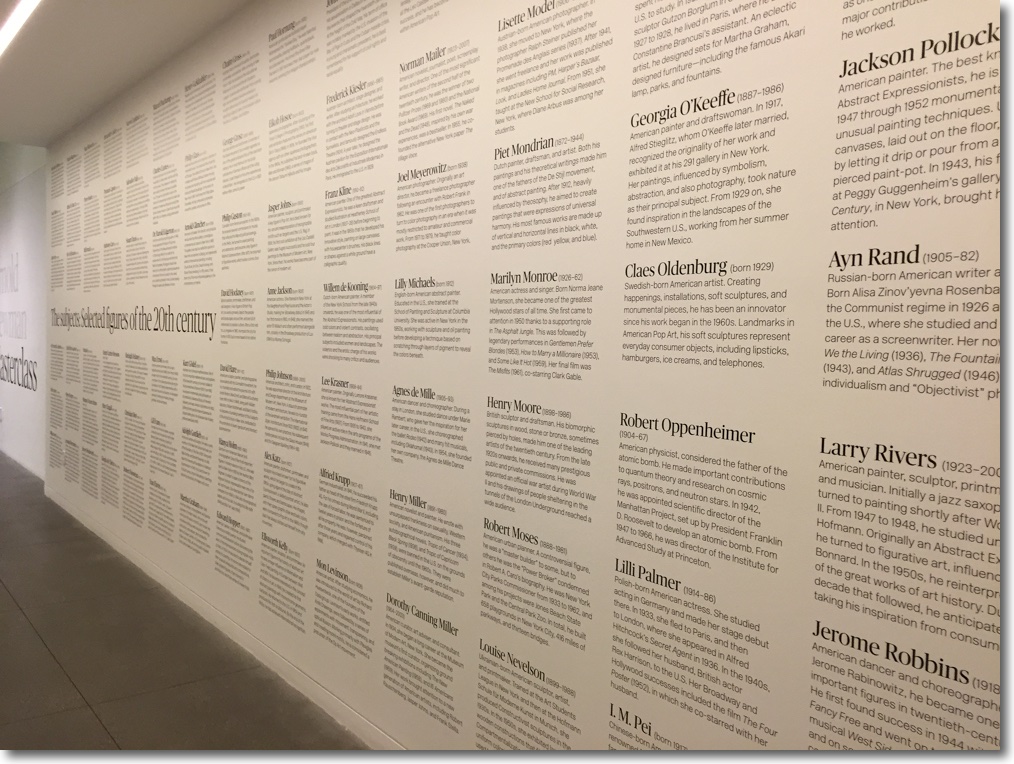
The famous people documented by Newman are profiled on the wall.
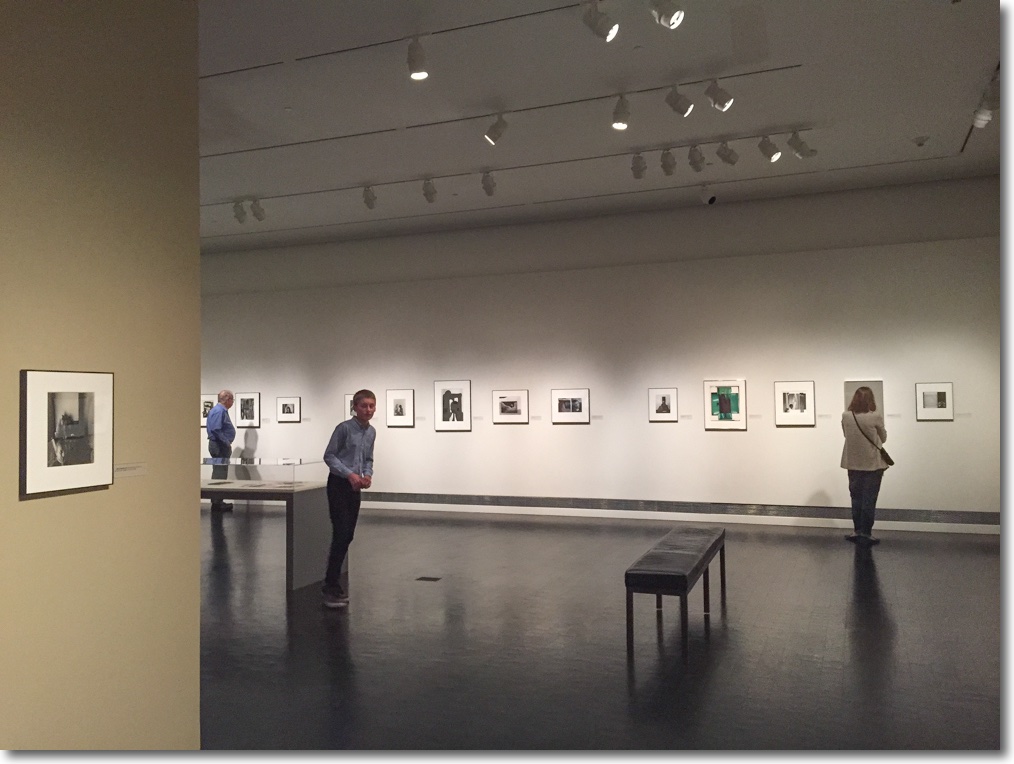
Inside the show – my son is in the foreground. The prints could be bigger ….
Given that Newman invariably worked with a 4″ x 5″ camera there is little excuse for the small size of the prints on display, though the coverage of his work is comprehensive. All of the images on display are monochrome, which is a shame.
